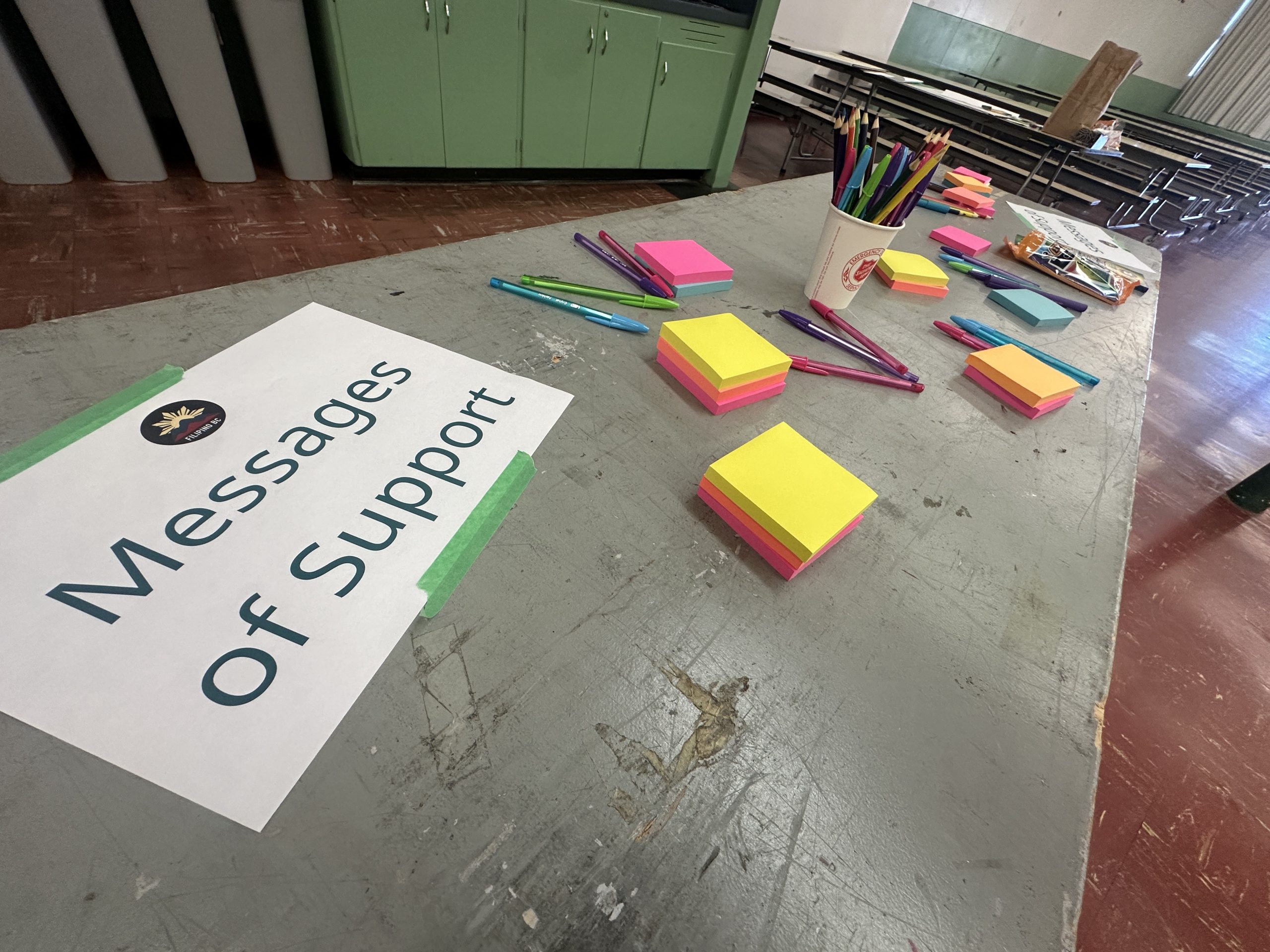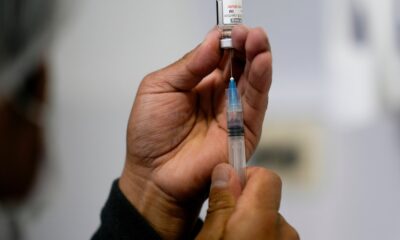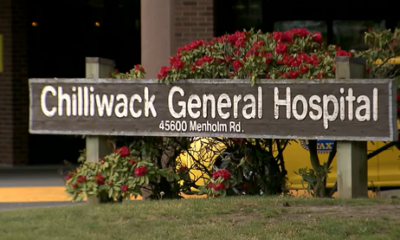Local News
How does a community respond to mental health, safety needs following Lapu-Lapu Day tragedy?

Editor’s Note: This story contains references to suicide. If you or a loved one is at risk of self-harm, Canada’s mental health helpline can be reached at 988 and the BC Crisis Centre at 1-800-784-2433. Translation services are available.
Following the Lapu-Lapu Day tragedy, conversations on mental health have been brought to the forefront, with politicians and community members working to support victims and calling for structural reform.
B.C. mental health and digital safety experts say children and parents should take extra caution in what they’re viewing and sharing online.
Meanwhile, offline community support is ramping up.
A safe space to be vulnerable
RJ Aquino, Chair of Filipino BC, an organization that preserves Filipino culture while nurturing the greater community health and social needs, has opened up the ‘Resilience Centre’ to serve the local community after the crisis.
The centre was a safe-haven coordinated by multiple stakeholders. It provided a temporary space for people to talk, access wellness resources, and share a hot meal.
Counsellors, social workers, and emergency staff from St. John’s Ambulance, the Canadian Red Cross, and therapy dogs were there to offer comfort.
Aquino reports seeing more than just the Filipino community come in. He says lots of people of all backgrounds came seeking solace.
“One person who came in who unfortunately lost three loved ones. There was another older adult woman who showed up to try to volunteer but we told her we weren’t looking to coordinate volunteers, but we invited her to come have a meal. She sat down, talked with support workers, became emotional and it became clear that she was the one who needed help. There were many people not from the neighbourhood or not Filipino,” said Aquino.
Directly affected or not, Aquino says the tragedy which took so many lives is causing a wave of distress, given the sheer number of people showing up.
The centre was set up at the Killarney Secondary School cafeteria. Filipino BC has offered three sessions so far, and based on community needs, is looking to keep the gathering space open. By present assessment, it says it will need to extend the sessions to become more than just a temporary installment.
Organizers want to place a centre closer to where the attack took place, on 41st Avenue and Fraser Street.
Aquino says he and his colleagues are not going to let the eventual end of the news cycle stop them from fulfilling their mission.
“People will still need support to rebuild their lives. You often see this after horrific events like this. There is a reactionary way of giving to organizations and community groups that have been working tirelessly for years to support underserved communities. Filipino BC, and many organizations and groups in B.C., want to continue to create support systems to take people at the emergency phase into the restorative, healing phase,” said Aquino.
The turnout the team saw has inspired them to keep providing support beyond the crisis. By keeping this work ongoing, giving people a quiet space to reflect and talk about anything, Aquino says not only will individual health improve, but public safety at large.
He sees Filipino BC’s project needing to last longer than just the upcoming weeks.
“It may not necessarily be a response to a crisis, but it is about building that community. And most people just want to come and be present with others, share a hot meal,” said Aquino.
Breaking the stigma around mental health
In the wake of the heartbreaking tragedy, one B.C. training centre wants to keep educating students, parents, and the community about emotional well-being and early-intervention for those at high-risk.
The suspect, Kai-Ji Lo, had a history of mental health issues and was under care through the Mental Health Act at the time of the attack.
Jennifer Chambers, a Senior Trainer and Consultant with Safer Schools Together (SST) and former school counsellor for 29 years at Vancouver Island School District, urges parents to be aware of what their kids are exposed to online.
SST’s analysts work to prevent violence by identifying those who are going down the path of criminal radicalization, suicide, and expressing intents of racism and threats towards students and staff.
Having worked both directly with students and a bigger organization that trains schools about online safety, Chambers urges the collaborative effort needed to keep kids healthy and safe on school grounds and while surfing the internet.
She says the work should not only be given to the students. While kids and teenagers often play the authority roles in the digital world, adapting to shifting trends faster, the adults in the room also need to be trauma-informed.
Chambers says young people need to see the shifts in behaviour in others early on, and say something about them.
“The greater variety of supports we have, the better. The more work we can do with our entire staff around having a trauma-informed lens… helps us keep the small things small when we aren’t dealing with things from an emergency-based perspective,” said Chambers.
Within the SST training programs, bridging the generational technology gap between students and teachers is an essential part of the curriculum when it comes to preventing violence in schools and communities.
Falling through the cracks: Addressing the mental health gap in school settings
As for schools bettering the mental health outcomes of students, Chambers acknowledges the gaps in support when it comes to school counsellor-to-student ratios.
She explains student-to-counsellor ratios are set by the provincial Ministry of Education, and says counsellors are in short supply, especially in elementary schools and rural communities.
“I would say there is no school or school district that wouldn’t welcome increased mental health supports in their schools,” said Chambers.
She also emphasizes how hard it is for students to get outside support when they are presenting more severely and need help beyond what school support staff can provide.
“A big theme that has been there through my career is the lack of community support in terms of how big those waitlists are getting and how difficult it is for families and youth when they are sitting on those waitlists without that focused support,” said Chambers.
Hard conversations about online safety
Chambers also cautions parents and guardians about the negative impact of viewing graphic content, especially for young people, such as the videos circulating from the Lapu-Lapu Day tragedy.
“What about those youth who saw things online, that were traumatic stimuli and they might not have had that direct link but they are impacted because it’s so easy to access disturbing stimuli, without necessarily people knowing that they have?” Chambers asked.
Chambers’ colleague, Rob Rai, senior executive at the ICDTA, an extension of SST, says he is also adamant about monitoring what kids and teenagers are seeing on their phones.
“Viewing that content in itself independently can be very harmful for young people. It can damage the psyche. It can really damage their souls. It is so important for adults, caregivers, and parents to really monitor what young people are consuming on their devices because it can leave a lasting negative impact,” said Rai.
In the context of the heartbreaking Lapu-Lapu Day attack, graphic images and videos were a huge concern for Rai and his team.
Even for adults of all ages, he thinks it’s better to consume in moderation, as traumatic content has long-lasting effects.
The power of community and support systems
Chambers and Rai want students, parents, and school staff to not be afraid to report something they see online that is concerning.
Chambers says there are always signs to look for when someone is on a path to violence.
“We always hypothesize that’s the cry for help and we want to support before committing an act of violence. It’s about education so people aren’t holding onto information and not knowing what to do with it”, explained Chambers.
SST asks people to always be on the lookout when scrolling social media, and not ignore potentially violent undertones within posts.
Rai says he doesn’t want people ignoring the early signs, which SST calls ‘leakage.’
“That leakage is for them to get that messaging out, consciously or subconsciously, looking for someone to see those warning flags, these warning signs and actually intervene and stop them from doing something they may not be fully committed to doing yet,” said Rai.
Sometimes ‘leakage’ is private, but from Rai’s experience analyzing threats, more often than not, it is posted on public platforms.
That is the moment when he encourages people to step in and alert one another about what’s being shared.












